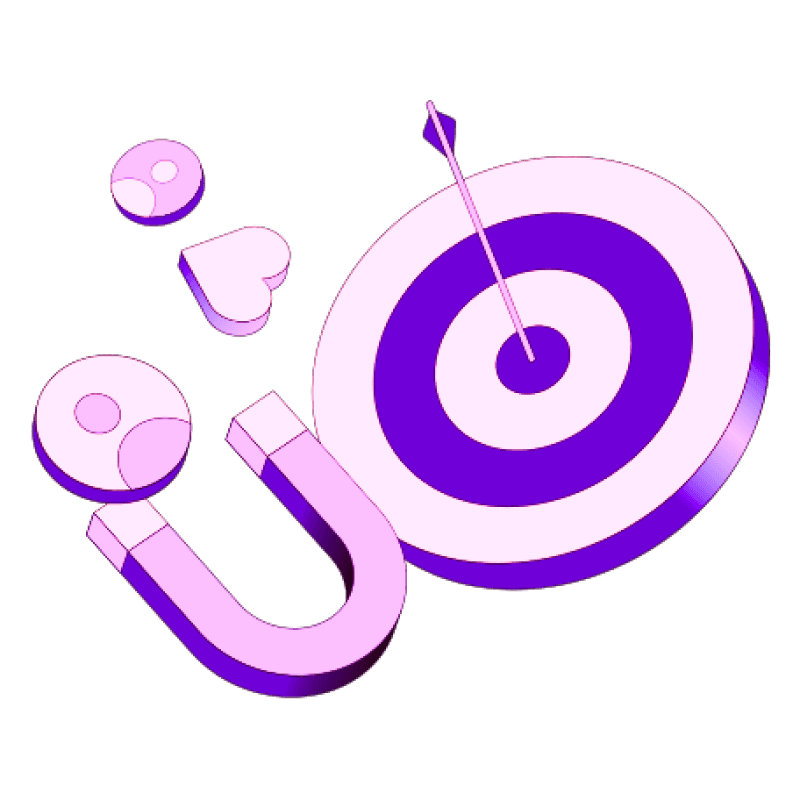Blogs
Articles

What is Sales Methodologies: How to Choose the Right One
Here's a surprising fact: 90% of companies that use a structured sales methodology become top performers. The right sales methodology can help your team work better and boost your revenue significantly.
This detailed guide breaks down the most effective sales methods. You'll learn which one lines up with your business goals and the practical steps to put it in place. The information here will help you make smart decisions, whether you want to change your entire sales strategy or just improve what you're doing now.
Let's take a closer look at these sales methods and learn how to use them to get amazing results!
What is the sales methodology?
A sales methodology represents a systematic approach to selling products or services that outlines specific steps, techniques, and strategies sales professionals use to identify, qualify, and close deals. Sales methodology works as a guiding philosophy that enables sales teams to achieve their goals consistently, unlike rigid processes.
Sales methodology acts like a thread that connects different sales cycle stages. Sales reps know exactly what to say, when to say it, what buyers think, and how to build stronger relationships when they follow it correctly. These methodologies create consistency throughout the sales pipeline and ensure customers get value from each interaction.
Proven best practices form the foundation of the best sales methodologies, making them consistent yet adaptable to changing buyer expectations and evolving sales environments. A typical methodology has:
Ways to handle change
Tools to improve practices
Successful behavior models
Steps to maintain training consistency
Specific communication approaches
Sales process vs. sales methodology
Sales processes and methodologies serve different purposes, though people often mix them up. Sales process represents the "what" of selling—a series of trackable steps moving from start to finish. Your CRM system ties into this process, which contains stages, gates, and helps with forecasting.
Sales methodology defines the "how" of selling—a collection of non-linear practices, learned behaviors, and strategies used dynamically to execute the sales process. Companies create unique processes, while methodologies are frameworks accessible to more people that any organization can adopt.
Sales processes control the entire sales cycle. Methodologies might focus on specific parts like discovery or qualification. Processes stay relatively fixed, but methodologies adapt based on specific situations and customer interactions.
5 Top Sales Methodologies Explained
Your team's approach to prospects and deal closing changes when you pick the right sales methodology. Here are five proven frameworks that deliver results for businesses of all types.
SPIN Selling
Neil Rackham developed SPIN Selling in 1988 based on research from over 35,000 sales calls. The methodology guides customer conversations through four question types: Situation (gathering information), Problem (clarifying challenges), Implication (what consequences mean), and Need-payoff (identifying benefits).
Challenger Sales Methodology
The Challenger method stands out because sales representatives challenge customer thinking instead of just building relationships. Research shows that Challengers made up nearly 40% of star performers, which jumped to 54% in complex sales scenarios. The approach follows five clear steps: warm-up, reframe, emotional impact, value proposition, and solution. This works best in complex B2B environments where customers need a fresh perspective on their challenges.
MEDDIC and MEDDPICC
MEDDIC helps teams focus on the right deals by qualifying prospects through six elements: Metrics, Economic buyer, Decision criteria, Decision process, Identify pain, and Champion. MEDDPICC adds Paper Process and Competition to handle modern challenges like contracts and competitive landscapes. One organization proved this method's worth by growing from $300 million to $1 billion in just four years.
Sandler Sales Methodology
The Sandler system came about in 1966 and takes a low-pressure, consultative approach with seven steps in three stages: engaging, qualifying, and closing. Both seller and buyer invest equally in the process, which eliminates typical sales games. The approach builds trust through upfront contracts that set clear expectations. This makes it ideal for high-ticket sales where trust matters most.
Solution Selling
Solution selling emerged in the 1980s and focuses on customer problems rather than product features. This customer-centric approach shines in complex sales environments with unique needs, especially in industries with high-value products, new technology, or heavy regulations. Solution sellers act as trusted advisors who understand their customer's industry and challenges before suggesting custom solutions.
How to choose the right sales methodology for your business?
Your business's unique landscape shapes the path to finding the perfect sales methodology. The first step requires you to define specific goals—whether you want to increase revenue, expand market share, or improve customer retention. Different methodologies serve different objectives, making clarity vital to your choice.
Product complexity and your industry substantially shape methodology selection. Simple methodologies work best for transactional sales with shorter cycles. Complex B2B sales with longer cycles and multiple stakeholders benefit from approaches like MEDDIC or MEDDPICC.
These practical steps will guide your sales methodology selection:
Assess your team's current strengths and weaknesses
Analyze your sales cycle length and typical deal size
Review how well each methodology merges with existing systems
Think about customer interaction priorities and buying behaviors
Determine your capacity for training and implementation
Note that a single approach isn't your only option. Many successful companies combine elements from multiple methodologies to build customized frameworks that tackle their specific challenges.
Performance measurement after implementation is vital. Data collection before and after adoption helps measure improvements and spots areas for refinement. A small pilot program tests effectiveness before full-scale deployment.
Your sales methodology should match your broader organizational goals. The right approach becomes a natural extension of your sales efforts and improves outcomes for both your team and customers.
How to implement your new sales methodology?
The success of implementing a new sales methodology needs careful planning and arrangement across functions. Research shows that proper implementation can increase your team's win rate dramatically and pay for itself many times over.
Your first step should be getting support from leaders in sales, marketing, product, and customer success teams. Each leader has a specific role—from creating training materials to ensuring consistent messaging. You should gather feedback from frontline sales leadership. Their buy-in is vital since they directly affect buyers. McKinsey's research shows a 2.0x and 1.6x increase in successful transformations when companies conducted weekly executive briefings and quarterly business reviews respectively.
A complete change management plan becomes essential because only 30% of transformation plans succeed. People naturally fear change, so you must communicate clearly about the need and value of the methodology change.
These ways to reinforce adoption work well:
Create accountability partnerships among team members
Implement a 90-day achievement challenge post-training
Provide ongoing application coaching from managers
Develop mobile-optimized refresher modules
Final Thoughts
The right sales methodology makes a huge difference in your team's performance and business success. This piece explores five powerful methodologies that offer distinct advantages based on your business context. SPIN Selling builds trust through strategic questioning. Challenger Sales pushes prospects to think differently about their problems. MEDDIC provides solid qualification frameworks. Sandler creates equal seller-buyer partnerships. Solution Selling puts customer-centric problem-solving first.
No perfect methodology exists on its own. Top organizations blend elements from multiple frameworks to create approaches that tackle their specific challenges. Your choice should match your goals, customer profiles, and team's capabilities—not just what's trending in the industry.
You need more than training sessions to implement these methods effectively. Leadership's steadfast dedication, CRM integration, consistent reinforcement, and performance tracking are vital to turn theory into practice.
Teams that don't deal very well with methodology selection or implementation can find expert guidance at Persana.ai to improve their sales transformation.
Note that adopting a methodology is an ongoing process of improvement. Your sales approach will grow with your business through constant refinement based on real-life feedback and results. This creates green practices and competitive edge that lasts.
FAQ
Can I use multiple sales methodologies simultaneously?
Yes, sales organizations of all sizes often use various methodologies to handle specific stages of the buyer's experience. You can combine elements from different frameworks to create an approach that fits your business needs perfectly.
What's the difference between a sales model and a sales methodology?
These terms mean different things, though people often use them interchangeably. Sales methodologies work for specific parts of the sales cycle like qualification or discovery. A sales model doesn't cover the entire sales cycle. Different organizations can use sales models successfully whatever they sell.
What are the key components of a customer-centric sales methodology?
Customer-centric selling has eight core elements:
Having conversations rather than delivering presentations
Asking relevant questions instead of offering opinions
Focusing on solutions instead of relationships
Targeting decision-makers rather than users
Promoting product usage to generate interest
Striving to be the best seller rather than the busiest
Closing on the buyer's timeline, not the seller's
Equipping buyers to buy instead of convincing them
Why do sales methodologies vary in effectiveness across organizations?
Each business has unique needs based on its customers, verticals, products, and industry position. So, a process that works perfectly for one company might fail for another. This explains why customization and matching your specific business context is vital.

Create Your Free Persana Account Today
Join 5000+ GTM leaders who are using Persana for their outbound needs.
How Persana increases your sales results
One of the most effective ways to ensure sales cycle consistency is by using AI-driven automation. A solution like Persana, and its AI SDR - Nia, helps you streamline significant parts of your sales process, including prospecting, outreach personalization, and follow-up.



